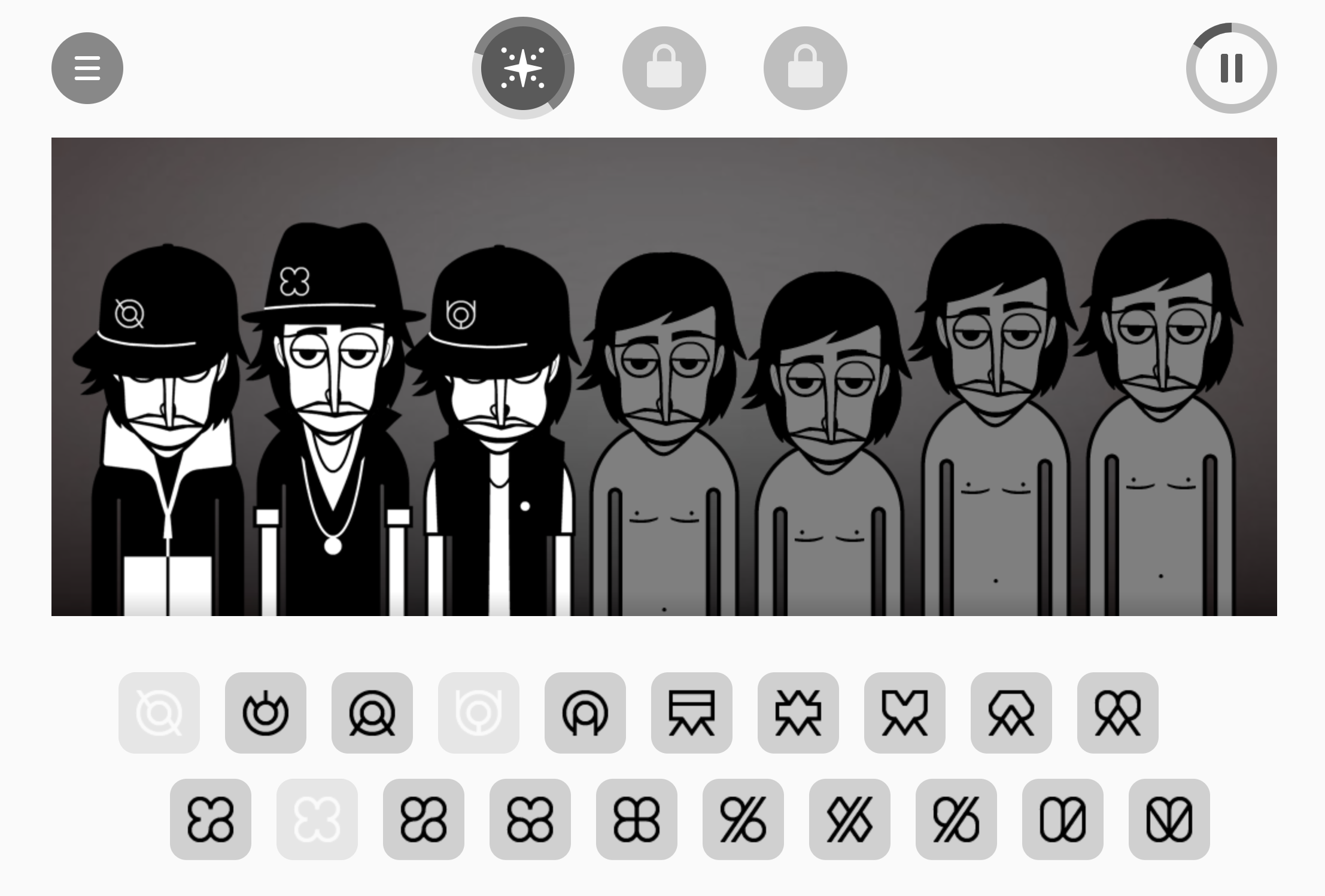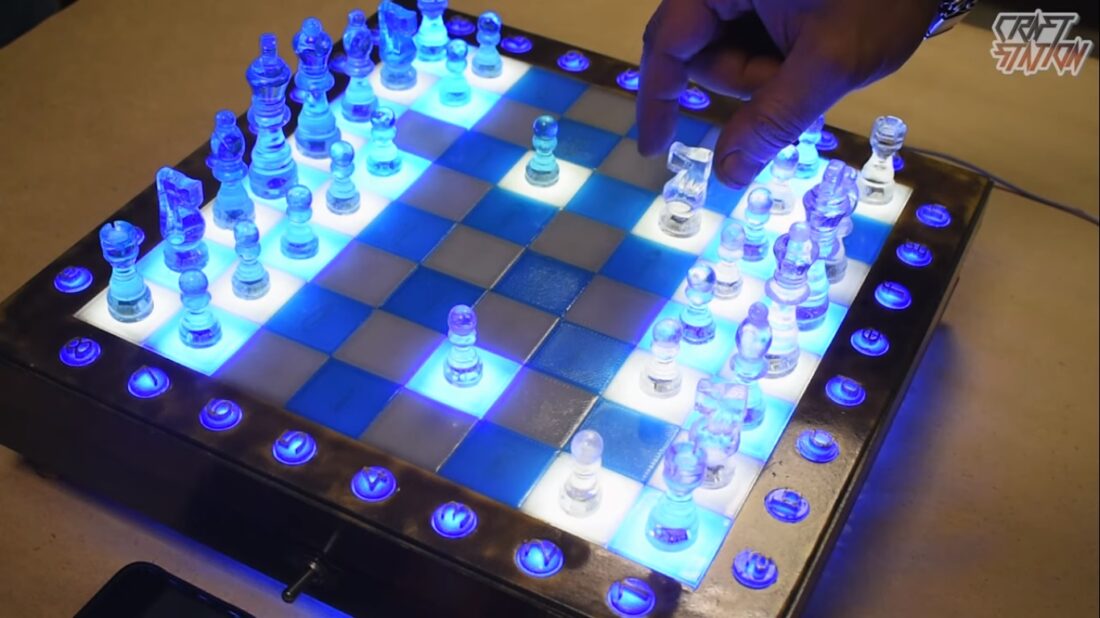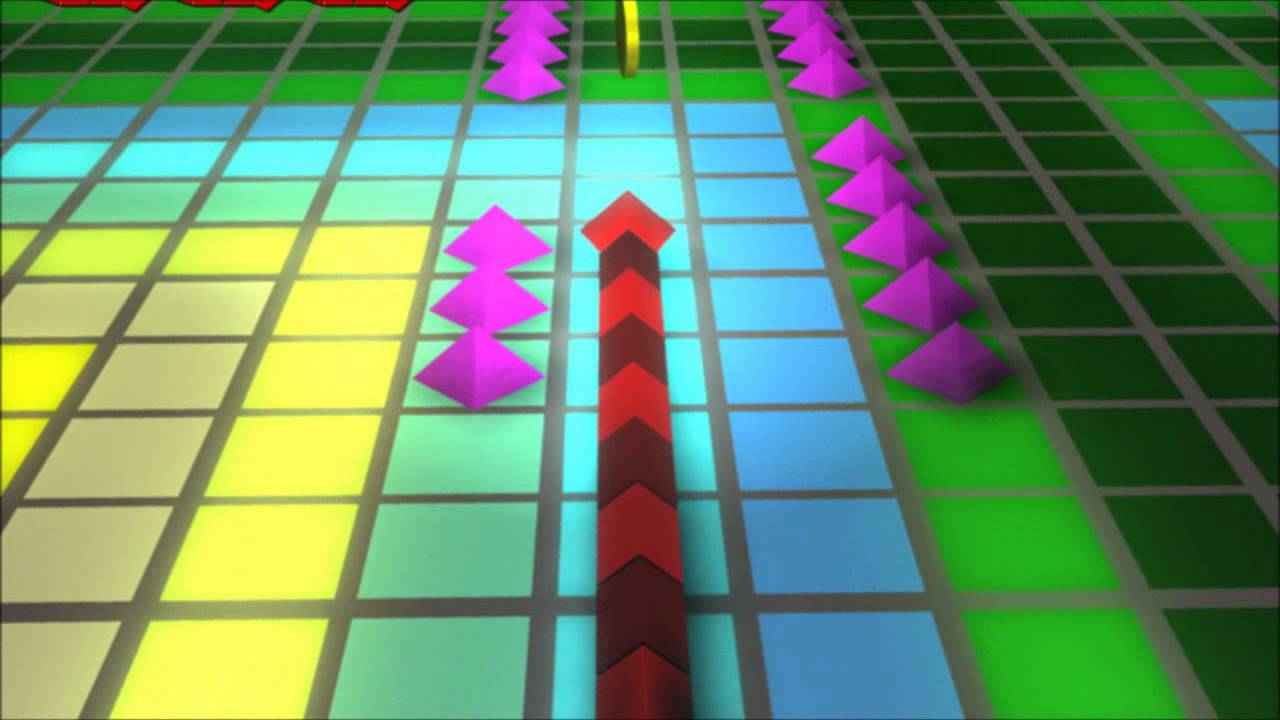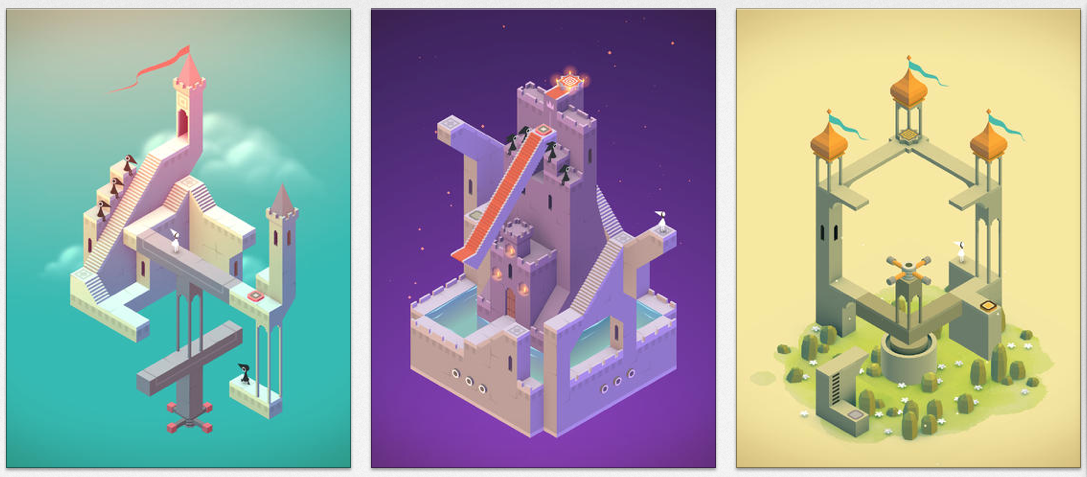For my final prototype, I have a sequencer based on the classic arcade game “Frogger” that takes place in space! The first and third row of cars, or in this case spaceships, move across the screen according to the rate of the sounds they produce while the second and fourth row of spaceships are playheads that play sounds when they cross the path left behind by the player. The sound produced when the playhead crosses is dependent on the color of the segment of the trail and whichever color is left behind by the player is random. The sequence is a chaotic hodgepodge of ‘space’ and early arcade game inspired sounds. I decided against ghost sounds because there was already a lot of sounds playing by the time the player builds a long/large path, but the trail left behind holds a memory of the previous actions adding an ‘actions have consequences’ motif to the game similarly to how the ghost players would and I added a feature request from Ge that has the astronaut spinning offscreen when hit by a car, which makes playing the sequencer more satisfying. When the player crosses to the other side, they return home to Earth free of the sounds caused by the spaceships and can march to the beat of their own drum (aka the player sound sans the sequencer).
Download Unity Project hereFor my sequencer, I decided to stick with the game themed concepts I came up with but decided to use the classic arcade game ‘Frogger’ as the basis for my sequencer instead. The foundation of the game is a game of Frogger in space where there’s an astronaut trying to pass a bunch of space junk (what exactly these are tbd) in order to get to the other side. If they bump into a ‘car’, they have to start over. So far, I have a player that makes sound and ‘car’ playheads that make their way across the screen while producing audio through Chuck. I have two types of cars, one type is driven by sound and makes sound the whole way while the other makes sound by passing through the previous path left by the astronaut. The latter type of car is not yet implemented in Chuck for this milestone, but will hopefully be in the final prototype. Another feature I plan to add are astronaut ghosts that will haunt the gamescape where the astronaut was last killed (idea courtesy of Kunwoo!) to not only add more sound to this sequencer but also have a memory of the player’s past actions in addition to the path, which reminds me of one of my favorite games, Undertale.

One of the first step sequencers I came across years ago was Incredibox. Incredibox gives you virtual beatboxers that you can mix and match to build a beat. I always liked how fun and intimidating the interface was and how easy it seemed to build a decent beat with it. In fact, it’s designed in a way that once you choose a version it’s impossible to build a bad beat with it. Later I discovered the more conventional music sequencers aka the digital audio workstations such as Logic Pro or Ableton Live. These sequencers are built for functionality first and are likely utilitarian compared to the types of sequencers we’re hoping to build in this class, but they’re still a useful reference for how sequencers work and I find them helpful to think about. For example, Logic is linear and reads almost like sheet music. There’s a metronome and you move forward with time. By contrast, Ableton does things in a more ‘live’ manner and you have a sound board that you can build then mess with loops to create music. It’s much less traditional in this way. The Chickencer is also a really interesting music sequencer. Not only was controlling parameters of sound through Unity really interesting but the part that I became fixated on is how the timing of the “doh” sounds was so exact and determined the speed of the moving little chicken and the bigger chickens pecking it. It’s really different from just making events happen in Unity then creating an accompanying sound and I’m excited to see what can be accomplished through Chunity in this way.

Hot take: I’ve always found chess to be an incredibly slow and boring game, mostly because the people I played against weren’t very good but unlike myself still cared about the outcome and took FOREVER to take their turn. I always like chess aesthetically and thought it was cool how all the pieces played different roles, so I have an idea on a sequencer that would really focus on that and make the game super difficult for those playing to win or with strategy. Why? Because it’s my sequencer and I’ll do what I want. The basic concept of this is the black and white tiles of the board will shuffle with the music, kind of like a light up dance floor. The way you move each piece will stay in line with the original game, however you must take into account what colored tiles are before you to determine how to move. For example, a pawn can move one space on any opposite colored tile from its current one and can only take another piece if it’s on a same colored tile. The music will come from the tiles and the piece that is ‘picked up’ / being moved. This is potentially the most difficult game of chess to win and all the plays and strategies can go out the window and the user(s) are forced to appreciate a beautiful game.

My second design sketch is for a 3D game of snake in which each block that can be collected creates sound and once added to the body of the snake will layer the sounds together building a sort of composition much like adding a loop in a DAW would. The game would have two views: a top down and one from the snake. The game could start off slow, allowing the player to collect sound cubes in peace while building a musical composition. As the snake gets longer and the music gets more chaotic, it can speed up and become more ‘game-like’ and difficult to keep up. I would have the game simply start over when the player crashes so there is no real winning or losing in this game, just another opportunity to create a composition.

My third design sketch is vaguely based on one of my favorite games, Monument Valley. Monument Valley is already a very musical gaming experience, but it would be cool if the music was entirely synthesized by the movement of the structures and if the structures were customizable. This sequencer would be called build-a-sequence and would be almost like playing with legos and assembling them into a structure but have each component emulate sound and have a multitude of arrangements that can create musical compositions. It would also be interesting if these structures were movable, like the ones in Monument Valley creating more musical possibilities.